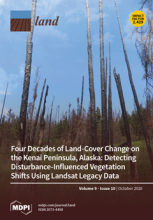Land Library
Bienvenue dans la bibliothèque du Land Portal. Explorez notre vaste collection de ressources en libre accès (plus de 74 000), comprenant des rapports, des articles scientifiques, des articles de recherche, des publications évaluées par des pairs, des documents juridiques, des vidéos et bien plus encore.
/ library resources
Showing items 19 through 27 of 93.With growing global demand for food, unsustainable farming practices and large greenhouse gas emissions, farming systems need to sequester more carbon than they emit, while also increasing productivity and food production.
Knowledge transfer depends on the motivations of the target users. A case study of the intention of Indonesian coffee farmers to use a tree canopy trimming technique in pine–based agroforestry highlights path-dependency and complexity of social-ecological relationships.
Mountainous regions are more sensitive to climatic condition changes and are susceptible to recent increases in temperature. Due to urbanization and land use/land cover (LULC) issues, Cameron Highlands has been impacted by rising land surface temperature (LST) variation.
In recent years modern societies have attached a multifunctional requirement to the use of renewable resources, making their optimal sustainable management more complex.
Papua New Guinea is a country in Oceania that hosts unique rain forests and forest ecosystems which are crucial for sequestering atmospheric carbon, conserving biodiversity, supporting the livelihood of indigenous people, and underpinning the timber market of the country.
Agroforestry, as the dominant land use at the volcanic foot slope in Java Island, is prone to landslide due to a combination of rough relief and thick soil layer.
Nine Latin American countries plan to use silvopastoral practices—incorporating trees into grazing lands—to mitigate climate change. However, the cumulative potential of scaling up silvopastoral systems at national levels is not well quantified.
Belowground roles of agroforestry in climate change mitigation (C storage) and adaptation (reduced vulnerability to drought) are less obvious than easy-to-measure aspects aboveground. Documentation on these roles is lacking.
Location-specific forms of agroforestry management can reduce problems in the forest–water–people nexus, by balancing upstream and downstream interests, but social and ecological finetuning is needed.



